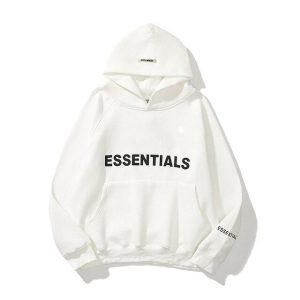Sustainable fashion is no longer a niche movement but a global necessity. Essential Clothing, a brand dedicated to providing eco-friendly wardrobe staples, is among the pioneers leading this shift. One of the most promising approaches to sustainability in Essential Clothing fashion is the subscription model, which promotes mindful consumption and reduces textile waste. However, while sustainable fashion subscriptions offer numerous benefits, they also come with challenges that brands like Essential Clothing must navigate. In this article, we explore these challenges and the future of sustainable fashion subscriptions.
Challenges of Sustainable Fashion Subscription Models
1. High Initial Costs and Pricing Challenges
Sustainable clothing often involves higher production costs due to the use of eco-friendly materials, ethical labor practices, and responsible sourcing. These costs are typically passed on to consumers, making sustainable subscriptions more expensive than fast fashion alternatives. Many consumers may be hesitant to commit to a recurring fee for ethical fashion, especially when fast fashion offers cheaper, readily available options.
2. Consumer Adaptation and Behavioral Shifts
One of the biggest hurdles sustainable fashion subscriptions face is changing consumer habits. Many shoppers are accustomed to instant gratification through impulsive purchases and frequent wardrobe updates. A subscription model requires a shift toward a more thoughtful and planned approach to fashion, which may take time for widespread adoption.
3. Logistics and Supply Chain Complexity
Managing a sustainable subscription service requires a well-structured logistics system. Brands must ensure timely deliveries, handle returns efficiently, and operate recycling or repair programs without causing excessive carbon emissions. Balancing sustainability with convenience remains a key challenge in streamlining the supply chain for ethical fashion.
4. Limited Style and Personalization Options
Subscription models often curate selections for customers based on preference surveys and past choices. However, some consumers may feel restricted by limited options compared to shopping freely. To keep customers engaged, brands need to offer diverse, high-quality, and versatile wardrobe selections that cater to individual tastes and seasonal trends.
5. Retaining Customer Engagement and Subscription Longevity
While initial sign-ups may be easy to attract, maintaining long-term subscribers is a challenge. Many consumers may subscribe for a few months and cancel once they feel their wardrobe is complete. Sustainable fashion brands must find ways to keep their offerings fresh and engaging while staying true to their ethical principles.
6. Ensuring Circularity and Effective Recycling Programs
Sustainability is not just about producing eco-friendly clothing but also ensuring that used garments do not end up in landfills. Some brands offer recycling programs where consumers can return old clothing for repurposing. However, managing these programs effectively, ensuring proper garment disposal, and encouraging consumers to participate can be logistically difficult.
The Future of Sustainable Fashion Subscriptions
Despite these challenges, sustainable fashion subscriptions have a promising future as consumer awareness of ethical fashion grows. Several innovations and industry trends are shaping the path forward:
1. Enhanced Personalization Through AI and Data Analytics
Brands are leveraging AI and data analytics to offer highly personalized subscription experiences. By analyzing consumer preferences, purchasing behavior, and lifestyle needs, brands can create tailored clothing selections that increase customer satisfaction and retention.
2. Expansion of Circular Fashion Initiatives
The future of sustainable fashion subscriptions will likely involve more robust circular fashion initiatives, including resale, repair, and rental services. Consumers will be able to return used clothing for refurbishment or resale, ensuring garments have an extended lifecycle.
3. Integration of Smart and Biodegradable Materials
Innovations in fabric technology, such as biodegradable textiles and smart materials that adapt to weather conditions, will enhance the appeal of sustainable fashion. These advancements will make it easier for brands like Essential Clothing to offer functional, eco-friendly garments within their subscription models.
4. Adoption of On-Demand and Made-to-Order Production
To minimize waste, brands are increasingly shifting toward on-demand and made-to-order models, where clothing is produced only when needed. This approach reduces overproduction and ensures that subscribers receive garments that align with their preferences without excess inventory waste.
5. Partnerships with Sustainable Suppliers and Ethical Manufacturers
As the demand for ethical fashion grows, more suppliers and manufacturers are committing to sustainable practices. Essential Clothing and similar brands will benefit from expanded access to eco-friendly materials and transparent supply chains, making it easier to scale sustainable subscription services.
6. Greater Consumer Awareness and Education
Brands will need to invest in consumer education to emphasize the benefits of sustainable fashion and responsible consumption. As more consumers Essentials Hoodie become aware of the environmental and social impact of their clothing choices, the demand for ethical subscription services will continue to rise.
Conclusion
While sustainable fashion subscriptions face notable challenges, brands like Essential Clothing have the opportunity to lead the way in transforming the industry. By addressing pricing concerns, improving personalization, optimizing logistics, and expanding circular fashion initiatives, the future of sustainable subscriptions looks promising. As consumers shift toward conscious consumption, sustainable fashion models will become more accessible, driving meaningful change in the industry.
